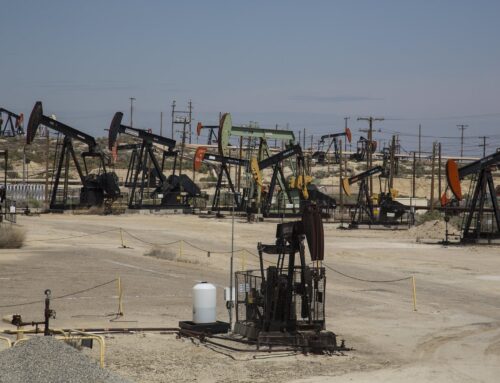On Wednesday, May 3, the U.S Senate Committee on the Budget held a hearing titled “Who Pays the Price: The Real Cost of Fossil Fuels.” This was the committee’s 7th hearing in Chairman Whitehouse’s (D-RI) series on the taxpayer costs of climate change. There were 3 witnesses present: Dr. Ted Gayer, President of Niskanen Center; Dr. Nicole Deziel, Associate Professor of Epidemiology at the Yale School of Public Health; and Ms. Diana Furchtgott-Roth, Director of The Center for Energy, Climate, and Environment at the Heritage Foundation.
According to Chairman Whitehouse, the hearing focused on, “the economic and budgetary perils of our over dependence on fossil fuels,” although this opinion was not shared by all committee members. It is well documented that the production and use of fossil fuels contributes to climate change, which in turn costs taxpayers. At the same time, the federal government has subsidized the oil and gas industry for more than a century through the tax code and the federal oil and gas leasing system. However, the total costs and impacts of these subsidies were widely debated.
In FY2022, the oil and gas industry received an estimated $6.7 billion in taxpayer subsidies. Fossil fuel tax breaks – some of which, like the intangible drilling costs deduction, date back to the very beginning of the federal income tax system – cost federal taxpayers nearly $3.2 billion in FY2022 according to the Joint Committee on Taxation. As Ranking Member Chuck Grassley (R-IA) cited, the President’s FY2024 budget includes proposals to eliminate many of these tax preferences for fossil fuel companies – reforms that would increase revenue for taxpayers by almost $97 billion over 10 years.
Other outdated oil and gas leasing policies, including below-market rates and methane lost through venting, flaring, and leaking, cost taxpayers an estimated $3.6 billion in FY2022 alone. While the Inflation Reduction Act (IRA, P.L. 117-169) included some much-needed federal oil and gas leasing reforms, like increasing the onshore oil and gas royalty rate, there is still work to be done to ensure taxpayers get a fair return for these valuable federal resources.
In addition to these direct subsidies, taxpayers pay the price of pollution – including health costs, ecological damage, and increasingly more frequent and deadly natural disasters, among others. As Chairman Whitehouse said, “the cash subsidy to Big Oil is both big and wrong. But the really big subsidy is the license to pollute for free.”
One health cost highlighted during the hearing was the Black Lung Disability Trust Fund, which was permanently funded in the IRA. The Black Lung Disability Trust Fund was originally established in 1977 and funded by an excise tax on coal. However, revenues from the excise tax have long not been enough to cover all the claims paid by the trust fund. The permanent extension of a higher excise tax rate will decrease the federal budget deficit by nearly $1.16 billion over ten years and is an important step towards ensuring industry, not taxpayers, are responsible for the health liabilities they have created.
The hearing also touched on another taxpayer cost of liabilities left behind by the oil and gas industry – remediating abandoned oil and gas wells. When a well ceases production and becomes inactive, it can pose environmental and public health risks if not reclaimed properly. For this reason, oil and gas operators must post a bond to drill on federal lands to cover the cost of cleaning up and restoring the land after drilling. However, the bonding minimums required by the Department of the Interior (DOI) are far below the average costs of reclaiming wells, forcing taxpayers to cover the remaining costs.
As Sen. Lujan (D-NM) said, “too often, oil and gas companies fail to plug their wells when production ends.” While the federal government does not track the exact number of orphaned wells on federal lands, the Interstate Oil and Gas Compact Commission (IOGCC) estimates there are between 210,000 and 746,000 total orphaned wells – including on state and private land – throughout the United States. Similarly, while we do not know the exact cost orphaned wells pose to taxpayers, taxpayers have and will likely continue to spend billions of dollars funding their cleanup. The Infrastructure, Investments, and Jobs Act (IIJA) recently appropriated $4.7 billion in taxpayer funds to reclaim wells on federal, tribal, and state lands – $250 million of which was directed towards federal lands – and more was requested in the FY2024 budget request.
For more information on the taxpayer costs of climate change:
- Report: Paying the Price of Climate Change
- Budget Watchdog, All Federal — Ep. 47: Paying the Price
- BWAF Podcast — Ep. 49: Adding to the Climate Tab
For additional information on orphaned wells and federal bonding:
- 101: Federal Onshore Oil and Gas Leasing Process
- FAQ: Abandoned Wells and Oil and Gas Bonding
- Fact Sheet: Oil and Gas Bonding on Federal Land
For further information on oil and gas subsidies:










